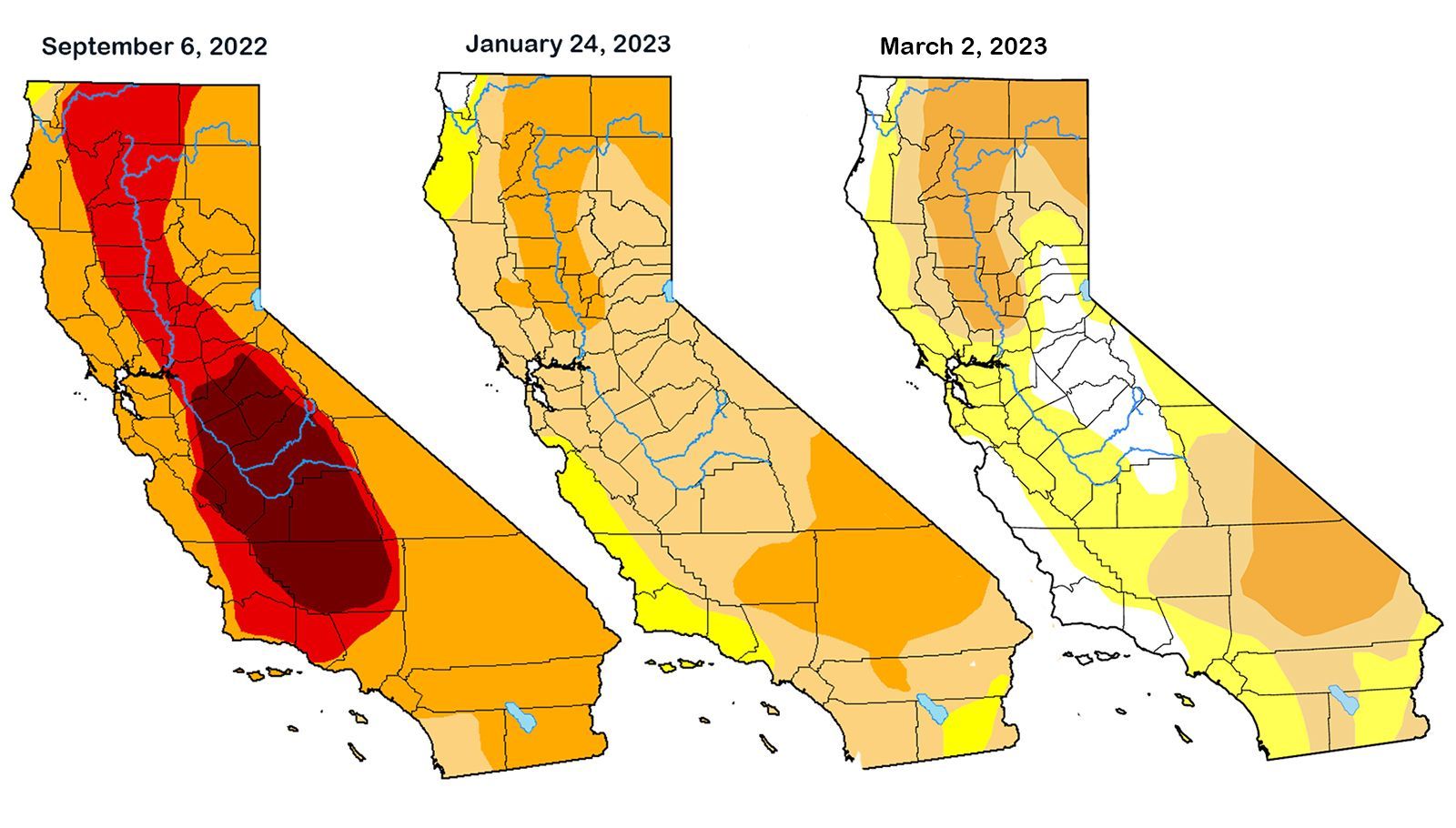California's punishing three-year drought, which had plagued the state with water shortages, wildfires, and crop losses, has been all but erased thanks to this winter’s barrage of rain and snow.
Indeed, this March has been the 7th wettest on record since 1895, according to the U.S. Drought Monitor.
According to the latest data from the U.S. Drought Monitor, areas of drought now cover less than 9% of the state (8.8% as of Saturday), down from over 99% at the start of the water year on October 1st, as AP News reported. None of the state is experiencing severe, extreme, or exceptional drought conditions any longer — a remarkable turnaround.

As the Drought Monitor map shows, the only remnants of drought can be found in the far north and southeast of the state. Surrounding these areas still in drought are regions with abnormal dryness, which still cover just over 25% of the state.
The winter’s atmospheric rivers are now bringing new problems: Warmer weather threatens to melt the snowpack built up all winter in the Sierras, potentially bringing mass flooding to regions including Tahoe and metropolitan areas downstream, such as parts of Fresno, Bakersfield and Reno, in the coming weeks, as the Chronicle reported.
Plus, this winter of atmospheric rivers in California won’t prevent a long-term water crisis. While the rain and snow refill reservoirs, larger groundwater resources underground in aquifers and basins have been depleted for centuries by residential and agricultural uses. Studies show that these types of resources take years to be replenished — if they recover at all.
RELATED: Drastic California Water Reductions Could Be Looming as White House Proposes Unilateral Usage Limits on States [SFist]
Feature image via US Drought Monitor.

